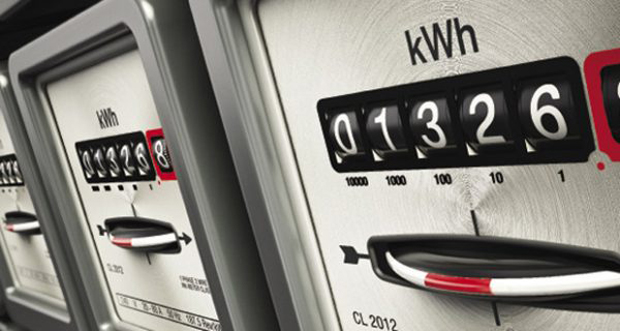With the rising cost of energy how are FMs managing the extra costs required in running buildings? Is the energy crisis encouraging organisations to invest more in renewables to supplement their energy needs as well as address carbon reduction? Do you predict capital investment in energy management solutions will increase?
 FM ENERGY SPECIALIST’S VIEW
FM ENERGY SPECIALIST’S VIEW
JAMES GRAHAM,
MANAGING DIRECTOR FOR EQUANS UK & IRELAND
The last few years has seen a series of material challenges for FM’s and indeed most organisations across the globe. The COVID-19 pandemic interrupted life and work as we knew it, the ongoing pressure to meet net zero carbon targets mounted; and now the energy crisis is impacting individuals and businesses alike with bills rising exponentially. Individually these pose difficulties, and together they can seem overwhelming; but while it might not feel like it – they are collectively lending one another to much-needed action.
Organisations were already looking at ways to invest more in renewable energy sources and the pandemic instigated a revaluation of the archetypal 9-5 office job. Throw into the mix the global rise in fuel costs and companies have never been more encouraged to start pushing forward with sustainable solutions.
No longer are simple energy management tools sufficient to mitigate escalating costs. Energy costs have risen up the priority list with businesses looking for ways to mitigate the impact. This is compounded by businesses being offered no protection from OFGEMS price cap, meaning that costs of production are rocketing, and some organisations are looking at the costs of simply keeping the lights on.
This is where FMs can be instrumental. Decarbonisation and facilities management will go hand in hand to driving us towards net zero, while keeping prices down. Investment in renewables, onsite generation with a combination of wind, solar and battery storage is clearly the panacea – there is a wealth of grant funding available, and this, combined with current energy prices, means that now is the time to really consider a step change to onsite renewable generation.
The stronger the appetite for this, the more likely it will drive capital investment and strengthen business cases to support investment in energy measures.
A myriad of decarbonisation funding pots has been launched in recent years, which have centred on retrofit models. This not only served to bolster net zero carbon ambitions, but it incentivised organisations to act and fight for their piece of the pie.
To obtain funding through the likes of the Public Sector Decarbonisation Scheme or Social Housing Decarbonisation Fund, local authorities and housing associations had to prove they had a robust delivery partner to achieve their goals. This in turn, put pressure on contractors to ensure decarbonisation was front and centre of any future projects and this stimulated innovation – applying pressure on the experts to seek attainable solutions.
If equivalent capital investment were introduced for sustainable energy management solutions, this would similarly encourage companies across all sectors to take action; and it would drive FM’s to continue innovating. Smart Buildings technology is critical to not only reducing cost but also optimising consumption based on the carbon intensity of the grid. FM’s will also have a bigger role as buildings become more interactive with the grid reducing costs through active demand management.
Our team consistently deliver significant savings generated through their installation, optimisation, and monitoring of building control systems, so we have seen how impactful these measures can be first hand. Every business or individual faces the escalating cost of living but taking action now will help to mitigate those costs and it has the benefit of pushing us closer to our net zero targets.
 SUSTAINABILITY CONSULTANT’S VIEW
SUSTAINABILITY CONSULTANT’S VIEW
DAN ELLIS,
HEAD OF ADLER AND ALLAN SUSTAINABILITY CONSULTANCY SERVICES
Our society is currently based on fossil fuels. The move to net-zero needs to happen quickly but it will not happen overnight. Many buildings will not be in a position to completely reconfigure their systems for some time to come.
Low carbon fuels such as Hydrotreated Vegetable Oil (HVO) can help in the short term. HVO, as a waste biomass-based product, has 90 per cent fewer emissions than diesel. As it is fully miscible with diesel, it can be used wholly in a system, or as a ‘top-up’ for incremental change. For those hard-to-treat assets, alternative liquid fuels can provide a transitional option.
As we decarbonise our buildings, we will have to decommission legacy fuel infrastructure such as tanks, pipework, and containment. The added benefit of moving to renewable energy is that other risks are reduced; The risk of pollution incidents is mitigated, there are fewer pipes liable to freezing, and maintenance costs and downtime are reduced.
But there is also the chance of unearthing historical pollution issues which may have gone undetected and require remediation. Early investigations help to understand such risks to be factored into the business case.
New petrol and diesel car sales are to be banned from 2030. However, the electric vehicle (EV) market is already booming with nearly 473,000 now on UK roads and EVs making up nearly 30 per cent of new car registrations in March 2022. Infrastructure needs to keep pace.
Workplaces, especially those in out-of-town locations, will play a key role in the roll out of an effective EV network. The ability to charge an EV at work will become a greater priority for employees and free charging will be seen as a value-added perk to attract good talent.
Installing charge-points will increase a site’s energy demand and may require electrical upgrades to accommodate larger and faster charging installations. This additional progressive energy demand arising from EV charging should be factored into any Net-Zero Plan for an asset, ensuring that renewable energy is either procured or generated on site to power them wherever possible.
Unfortunately, despite our best efforts in reducing absolute carbon emissions, the effects of climate change will continue to impact us. Even if we achieve net-zero tomorrow, historical emissions in the atmosphere will continue to heat our planet well into the future.
Therefore, commercial building managers may need to adapt their assets and strengthen resilience.
The changing climate means drier dry spells, more extreme rainfall events, stronger storms, and increased flooding.
Higher temperatures mean equipment may have to work harder and draw more power. Effective maintenance is key to ensuring plant remains as efficient as possible. Existing critical infrastructure that may have to remain in place for some time to come, should be protected against physical risks. Where assets are converted to low and zero carbon technologies – these too should be future-proofed at the time of upgrade.





